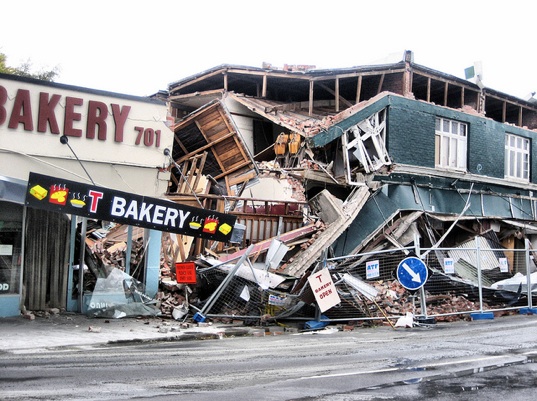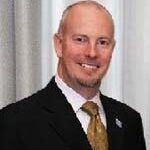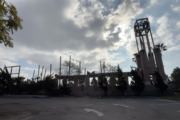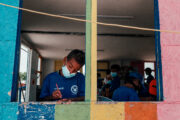It’s in the proverbial DNA of faith communities to respond to human suffering. But most American congregations and major faith traditions have not yet developed a culture of disaster preparedness or an awareness of the importance of building disaster-resilient communities–despite their deep commitment to addressing the root causes of other threats to community wellness, such as homelessness, hunger and poverty.
To be sure, many faith communities have embraced preparedness in the post-9/11 and Katrina era, but this progress has not yet led to a broad shift in faith-based cultures toward all-hazards resilience. Nonetheless, FEMA’s “whole community” doctrine suggests that without faith communities as stakeholders, the goal of a more disaster-resilient nation remains distant.
The National Disaster Interfaiths Network (NDIN) and CRCC have spent the past four years exploring, researching and teaching best practices on one aspect of the whole community doctrine–the civic engagement of faith communities and religious leaders throughout every phase of the disaster lifecycle. This engagement includes the participation of our nation’s most ubiquitous public institutions not only in humanitarian relief but also in mitigation education, preparedness training and the development of strategies for long-term recovery.
In our attempt to engage all faith communities and relevant secular non-profits or government agencies in an exploration of how to promote whole community resilience, we have also had to negotiate misunderstandings between individual faith communities and between faith-based groups and secular culture as well as civic institutions. But that tension has always been balanced by a profound sense of shared responsibility, patriotism and commitment to service among all partners. To bridge this divide, the federal government established faith-based initiatives centers within all federal agencies, a model that many state and local governments have also adopted. On the other hand, many faith-based and secular relief agencies employ government or faith community liaisons too.
Faith-based organizations have historically represented over two-thirds of the membership of National Voluntary Organizations Active in Disaster (National VOAD). National VOAD itself has intentionally become significantly more diverse in the last decade–no longer representing only traditional providers, white Protestants and one or two Roman Catholic and Jewish agencies. Over the past five years, with considerable support from the FEMA Center for Faith-based and Neighborhood Partnership, African American and Buddhist groups are now engaged. NDIN and CRCC also facilitated the application process for two new Muslim members; currently, Latino and Sikh coalitions are also seeking membership.
Despite these positive developments, significant challenges remain. We live in a nation that is not completely comfortable with our increasing religious diversity and all that it implies about culture, economics, gender roles, language, priorities and legal rights. About 84 percent of us are formally affiliated with one of over 200 active faith communities (denominations, sects or distinct religious traditions). But while more than 70 million Americans are not Christians, many people–including some government leaders–claim the United States was founded as a Christian nation, despite constitutional evidence and legal precedent to the contrary. Many Americans, including leaders in government and non-profit institutions, are not religiously literate enough to reach across these differences to engage one another effectively or competent enough to care for the basic human needs of individuals, families and communities who will be impacted by disasters of various kinds.
And despite common public perceptions, our government is not a monolithic entity. It is made up of individual players and reflects their gifts, talents and expertise as well as their biases and ignorance. Perhaps more importantly, when government actors speak, they represent the authority of government for the people they serve. Without adequate information, their words, however well intentioned, can contribute to misunderstanding and conflict. For example, it is not uncommon to hear government employees and VOAD leaders using the term “church” to mean “house of worship” of any faith.
Obviously we have work to do as a nation. We can improve levels of disaster resilience only through the whole community doctrine, which means that faith communities must be better engaged in preparedness and resilience efforts. And with our government partners we must continue to explore opportunities to build religious literacy and competency – not in order to be politically correct, but to have a national identity that reflects our whole community and values our diversity.
Peter Gudaitis is the president of the National Disaster Interfaiths Network (NDIN) and a guest contributor with the USC Center for Religion and Civic Culture.






